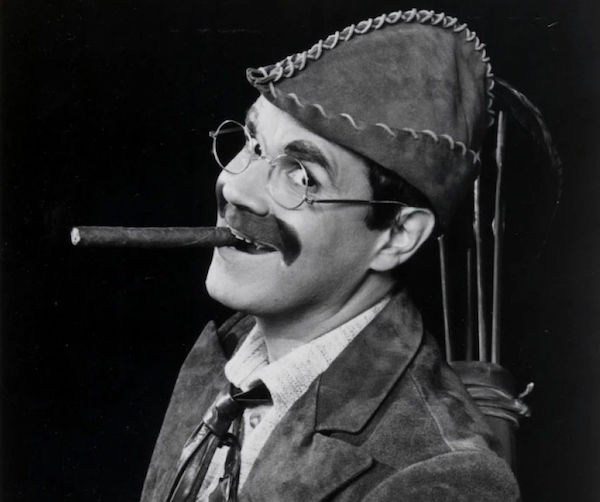When the lockdown ends and art-making resumes, there will be plenty of temptation to make art about what is happening in the world. Referencing popular culture in your art can carry risks. Andy Warhol and Jeff Koons were both successfully sued for things they appropriated. Richard Prince won a lawsuit against a working artist he had “appropriated” images from, but was publicly humiliated by Ivanka Trump, whose Instagram he had appropriated. Some references age better than others. Ed Ruscha’s Spam (1962) painting looks more prescient with the advent of Monty Python and email.
Referencing people carries an even greater risk. Although some of the villains of today may seem colorful, it’s possible that nobody will recognize their names a decade from now. Celebrity impersonators offer us a glimpse of how references to pop culture can age the most poorly. Charles Pierce was a female impersonator who did impressive renditions of Mae West, Tallulah Bankhead, Bette Davis and Joan Crawford. If you’re too young to have seen these same people on talk shows in the 1970s, his act might not make much sense to you. Michael Jackson impersonators increasingly seem more sinister. Marylin Monroe impersonations now have less to do with the actual person and more to do with an image of her. Vaughn Meader had best-selling comedy albums as a Kennedy impersonator. His career died in Dallas on November 22, 1963. Frank Gorshin is barely remembered for his lucrative career, imitating celebrities in night clubs. But multiple generations know that he played The Riddler to Adam West’s Batman (1966).

Charles Pierce impersonations.
One of the biggest name celebrity impersonators is Rich Little. He was famous enough around 1980 to get multiple HBO specials. His version of Robin Hood is one of the best examples of how disconnected it feels when an impersonator is doing celebrities who are less iconic than they had been, at the time he was imitating them. In 1982, when the CBC commissioned a new special from him (he had already done one, where he played all of the lead characters in Rich Little’s Christmas Carol, shown in the USA on HBO) he was at the peak of his fame. He could imitate all of the Marx Brothers, John Wayne, Humphrey Bogart, Liberace and even Carol Channing. So why not include them as characters in Robin Hood?

Rich Little, Christmas Carol, 1979
With a big budget, they built elaborate sets, hired a gaggle of extras, and arranged for body doubles to play Little’s back, when he was interacting with himself. As the casting was based on who he did impressions of, it feels arbitrary and surreal. Robin Hood would be Groucho Marx. Little John would, of course, be John Wayne. And who better to narrate this whole tale than George Burns? While the choices were logical based on his abilities to imitate famous people, they feel like a pitch meeting on cocaine, when the reality of them interacting sets in. One of the things that makes celebrity impersonations work is context. If you make a reference to Casablanca in a Bogart voice, it registers as him. When the same voice is used to play Prince John, and the answer is in the voice of Stan Laurel, as the Sheriff of Nottingham, you get something much weirder. If you plan to reference current events or celebrities in your artwork, consider this a cautionary tale.


